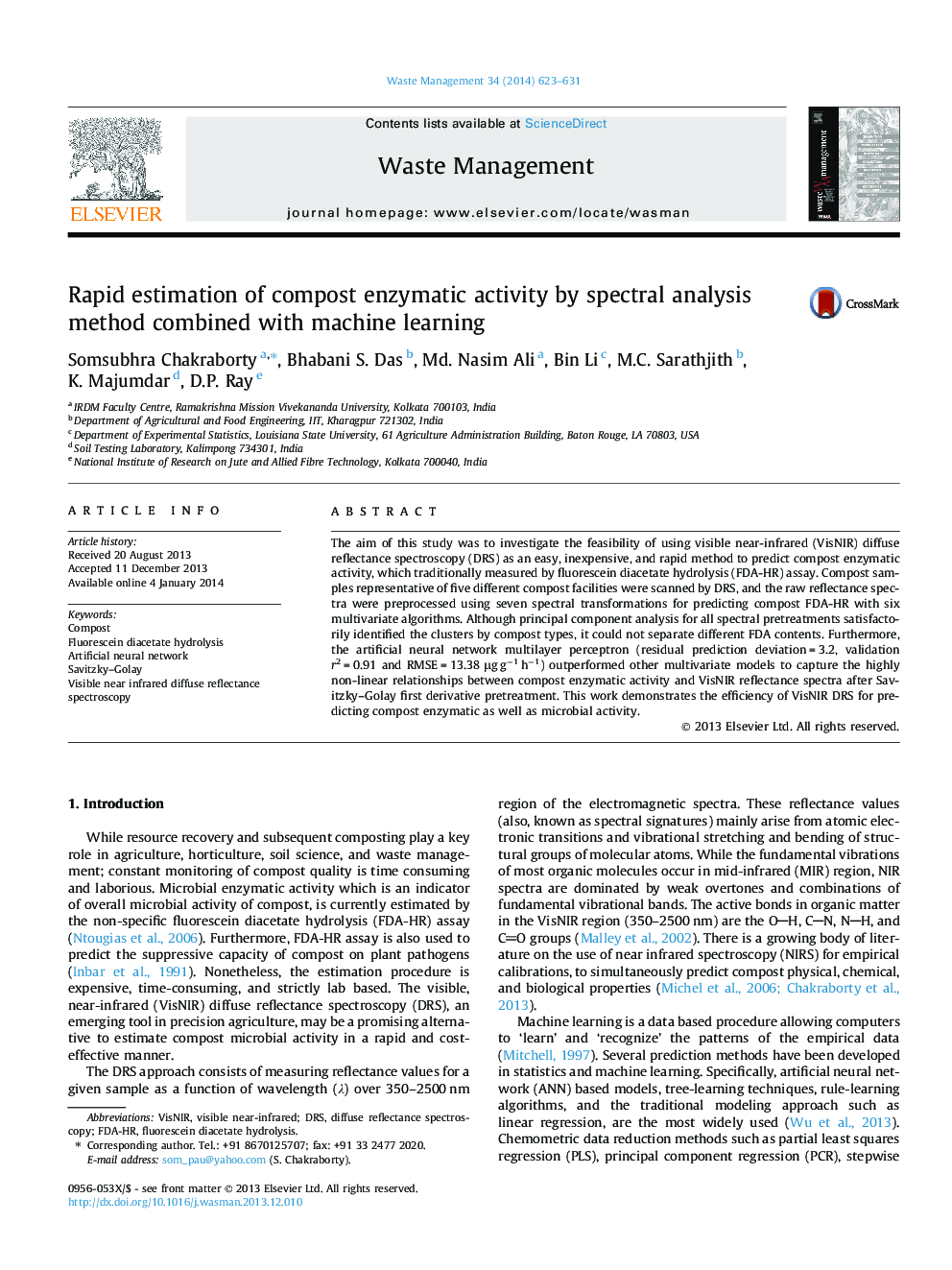| Article ID | Journal | Published Year | Pages | File Type |
|---|---|---|---|---|
| 6355383 | Waste Management | 2014 | 9 Pages |
Abstract
The aim of this study was to investigate the feasibility of using visible near-infrared (VisNIR) diffuse reflectance spectroscopy (DRS) as an easy, inexpensive, and rapid method to predict compost enzymatic activity, which traditionally measured by fluorescein diacetate hydrolysis (FDA-HR) assay. Compost samples representative of five different compost facilities were scanned by DRS, and the raw reflectance spectra were preprocessed using seven spectral transformations for predicting compost FDA-HR with six multivariate algorithms. Although principal component analysis for all spectral pretreatments satisfactorily identified the clusters by compost types, it could not separate different FDA contents. Furthermore, the artificial neural network multilayer perceptron (residual prediction deviation = 3.2, validation r2 = 0.91 and RMSE = 13.38 μg gâ1 hâ1) outperformed other multivariate models to capture the highly non-linear relationships between compost enzymatic activity and VisNIR reflectance spectra after Savitzky-Golay first derivative pretreatment. This work demonstrates the efficiency of VisNIR DRS for predicting compost enzymatic as well as microbial activity.
Related Topics
Physical Sciences and Engineering
Earth and Planetary Sciences
Geotechnical Engineering and Engineering Geology
Authors
Somsubhra Chakraborty, Bhabani S. Das, Md. Nasim Ali, Bin Li, M.C. Sarathjith, K. Majumdar, D.P. Ray,
